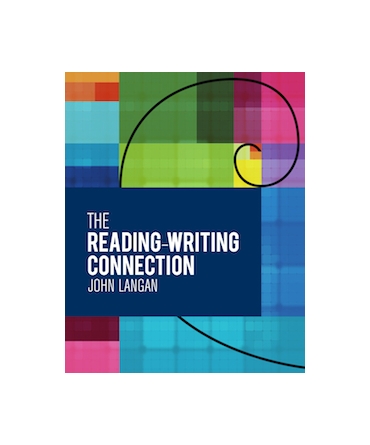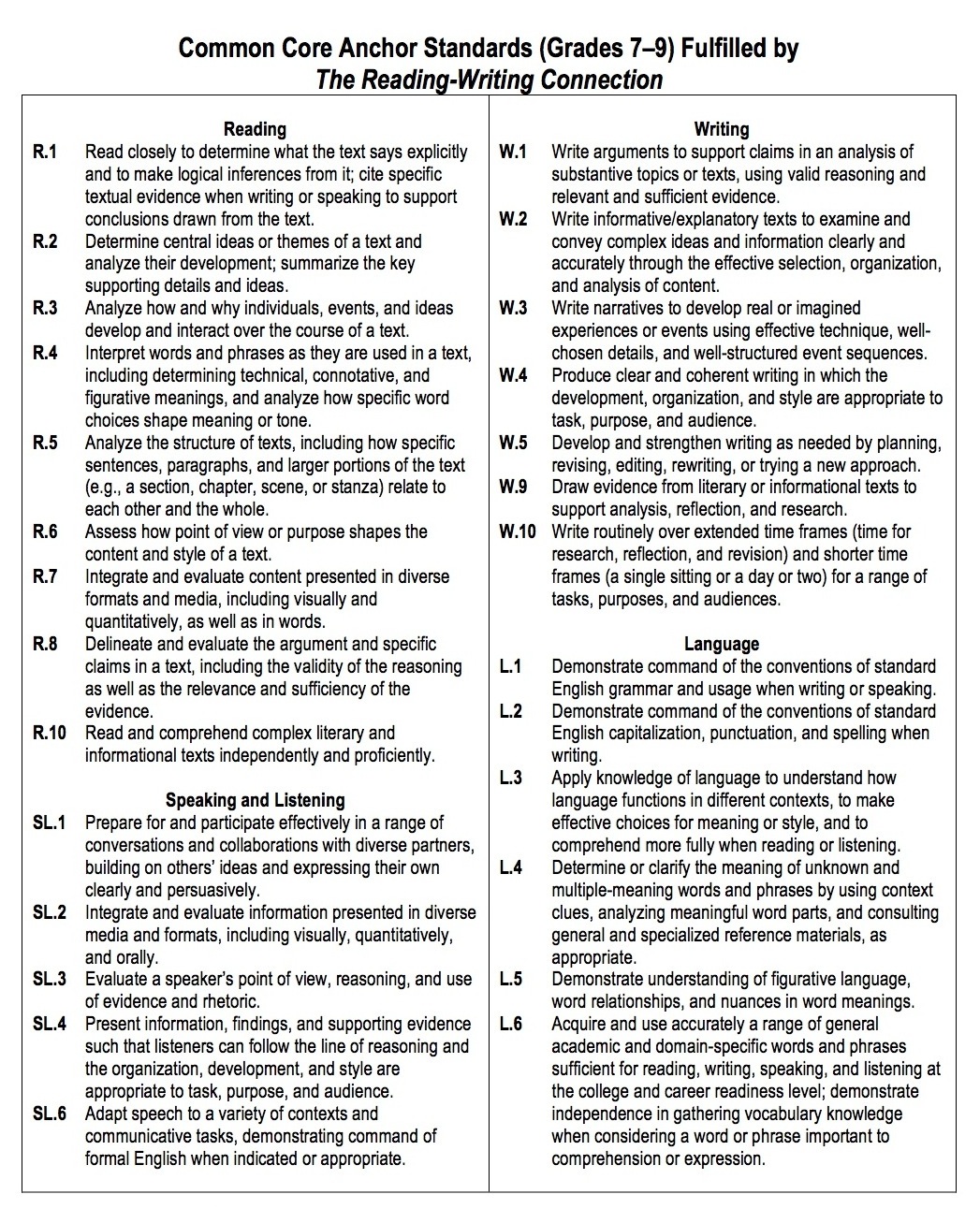The Reading-Writing Connection

Overview
An integrated reading and writing text for your developmental classes.
The Reading-Writing Connection, by John Langan, features his famously clear and user-friendly approach—a pedagogy that has propelled countless students to success in the classroom and beyond! Suitable for combined reading and writing classes, the book teaches students, in a step-by-step way, the skills they need to think, read, and write with clarity.
More information
Educators, please click here to request a desk copy.
Key Features of The Reading-Writing Connection
Emphasis on clear thinking.
A basic truth at the heart of both the reading process and the writing process is that any thoughtful communication of ideas has two basics parts: (1) a point that is made and (2) the support for that point. As students work their way through this book, they will learn to apply the principle of point and support. They are encouraged when reading an essay to look for a central idea as well as for the reasons, examples, and other details that support that idea. They are reminded when writing to follow the same basic principle—to make a point and then provide support for that point. And they discover that clear thinking involves both recognizing ideas and deciding whether there is solid support for those ideas.
Frequent practice.
Abundant practice is essential to learning, so this book includes numerous reading and writing activities. Each of the fifteen readings that make up Part Two is followed by a sequence of activities: freewriting, a vocabulary and comprehension check, discussion questions, and paragraph and essay assignments.
High interest level.
Dull and unvaried exercises, assignments, and readings work against learning. Students need to experience genuine interest in the materials that they read and the assignments that they write. Everything in the book, including the fifteen readings in Part Two, has been chosen not only for the appropriateness of its reading and writing levels but also for its compelling content.
Ease of use.
The logical sequence in the chapters—from explanation to example to practice to mastery test—helps make the skills easier for instructors to teach and for students to learn.
Integration of skills.
After learning the connections between reading and writing skills in Part One, students go on to apply the skills to the reading selections and writing assignments in Part Two. Through a great deal of practice in using reading and writing skills, they become more effective readers and writers.
Friendliness of tone.
As is the case with all of John Langan’s books, The Reading-Writing Connection is written in a friendly tone, with a helpful voice that never condescends to students.
Instructor’s edition.
An annotated Instructor’s Edition is identical to the student book except that it provides answers to all the practices and tests, as well as comments on most answers.
Available electronic resources.
Reading-Writing Plus is an available subscription-based suite of electronic resources to accompany this text. It includes digital exercises, mastery tests, assessments, the Skills Bank, the Readings Bank, eBooks* of The Reading-Writing Connection, The Advanced Reading-Writing Connection, and the 100+ titles in the Townsend Library. Note: Students must have a paid subscription to access Reading-Writing Plus materials. Click here to learn more about subscription options, including discounted digital/textbook bundles.
*eBooks are NOT included with Reading-Writing Plus LE (Limited Edition).
TABLE OF CONTENTS
INTRODUCTION: The Reading-Writing Connection
PART ONE: Reading and Writing Skills
1 Vocabulary Development for Reading and Writing
Mastery Tests
2 Main Ideas in Reading
Mastery Tests
3 Supporting Details in Reading
Mastery Tests
4 Main Ideas and Supporting Details in Writing
Mastery Tests
5 Understanding the Writing Process
Mastery Tests
6 Relationships in Reading
Mastery Tests
7 Relationships in Writing
Mastery Tests
8 More Relationships in Reading
Mastery Tests
9 More Relationships in Writing
Mastery Tests
10 Inferences in Reading and Writing
Mastery Tests
11 Longer Selections in Reading and Writing
Mastery Tests
PART TWO: Fifteen Selections for Readers and Writers
Introduction to the Reading Selections
1 The Yellow Ribbon Pete Hamill
2 Adult Children at Home Marilyn Mack
3 Rowing the Bus Paul Logan
4 All Washed Up? Sara Hansen
5 The Scholarship Jacket Marta Salinas
6 Taming the Anger Monster Anne Davidson
7 All the Good Things Sister Helen Mrosla
8 Shame Dick Gregory
9 “Extra Large, Please” Alice M. Davies
10 A Change of Attitude Grant Berry
11 Abusive Relationships among the Young Miriam Hill
12 A Door Swings Open Roxanne Black
13 A Drunken Ride, A Tragic Aftermath Theresa Conroy and Christine M. Johnson
14 Migrant Child to College Woman Maria Cardenas
15 Students in Shock John Kellmayer and Alina Wyden
About The Reading-Writing Connection:
This is a brand new book in its first edition. Download a complete brochure for The Reading-Writing Connection and other Townsend Press titles here.
Supplementary Materials
The Reading-Writing Connection includes the following supplements:
Print Supplement
The Reading-Writing Connection features an annotated Instructor’s Edition, which is identical to the student book except that it provides answers to all the practices and tests. In addition, the Instructor's Edition includes useful hints for teachers as well instructive annotation to help scaffold lessons. No other book on the market has such detailed and helpful annotations.
Digital Supplements
1. A downloadable Instructor’s Manual and Test Bank includes suggestions for teaching, a model syllabus, and readability levels for the text and the reading selections. The test bank contains four additional mastery tests for each of the skills chapters in Part I—all on letter-sized sheets so they can be copied easily for use with students. This resource is available to all instructors in the Learning Center.
2. Downloadable PowerPoint presentations have been crafted to teach key skills and concepts directly to students. These PowerPoints are available free to instructors in the Learning Center.
3. Reading-Writing Plus is a powerful subscription-based collection of digital resources for your college reading or college readiness program. Drawing from the acclaimed pedagogy of our Ten Steps Series, Reading-Writing Plus is a digital suite of exercises, mastery tests, assessments, and instructional videos; a Skills Bank; a Readings Bank; and eBooks* of both of our combined reading-writing texts along with more than 100 Townsend Library titles. Note:Students must have a paid subscription to access Reading-Writing Plus materials. Click here to learn more about subscription options, including discounted digital/textbook bundles, or download a brochure here.
* eBooks are not included with Reading-Writing Plus LE (Limited Edition).
To Obtain Supplements
Print supplements can be obtained quickly by calling Townsend Press (1-800-772-6410), by sending a fax on school letterhead to 1-800-225-8894, or by e-mailing Customer Service at cs@townsendpress.com. Digital supplements are free to educators with a valid instructor account in the Learning Center. Get yours here.
TP's Reading-Writing Connection and the Common Core State Standards
If you’re looking for a powerful, effective, Common Core-aligned resource to help you teach reading and writing to your students, look no further. You will find a key ally in The Reading-Writing Connection.
The Reading-Writing Connection helps students learn the reading skills needed for success in the classroom and beyond. In the course of building students’ reading and writing skills, The Reading-Writing Connection also addresses the competencies and benchmarks outlined in the Common Core State Standards (CCSS).
The connection between the Common Core and The Reading-Writing Connection emerges from their shared educational fundamentals. Both draw from practical classroom experience and research in the fields of reading and composition. Both focus on the same goal: to empower students to be strong, active, and critical readers and writers. And both, in an effort to achieve this goal, outline a series of foundational skills students need to master. The Reading-Writing Connection goes one step further; it teaches these skills through practice exercises, assignments, readings, and tests.
The Reading-Writing Connection covers the CCSS Anchor Standards for Grades 7–9 itemized below, in the following categories: Reading, Writing, Speaking & Listening, and Language.
In addition, The Reading-Writing Connection also fulfills an impressive number of CCSS benchmarks for the specific grade levels it spans. The downloadable Reading-Writing Connection CCSS Grade-Level Analysis, lists the specific CCSS benchmarks, by grade, covered in the book.

[1] CCSS Anchor Standards citations are coded as follows: The abbreviation of the instructional strand’s name and then the standard number. So the standard labeled “R.3” indicates the “Reading” strand, standard number three, which is “Analyze how and why individuals, events, and ideas develop and interact over the course of a text.” For a complete listing of the CCSS, please visit www.corestandards.org.
